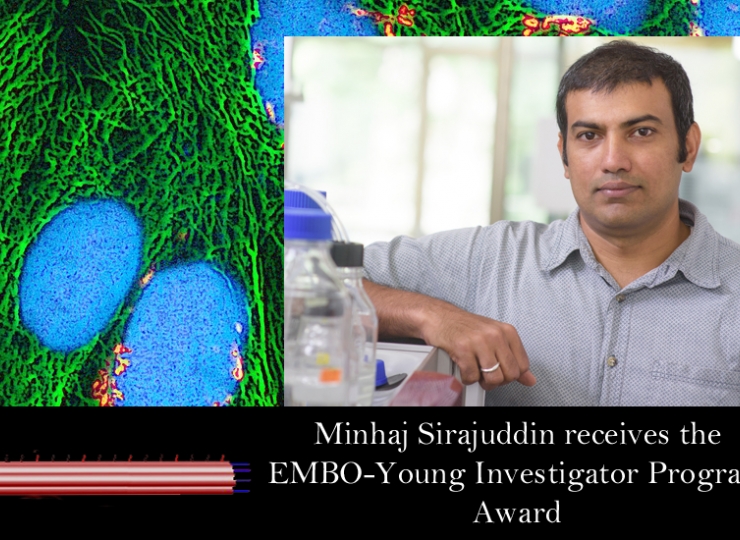Knowledge of advantages of the natural world is steeped into the Indian subconscious. Tulsi (Ocimum tenuiflorum), a ubiquitous herb is used for therapeutic purposes. It has been mentioned in ancient Indian scriptures and has found a wide usage in Ayurveda, the Indian traditional system of medicine. Known for producing many aromatic compounds, Tulsi is known as 'Queen of Herbs'.
A multi-institutional team led by Sowdhamini Ramanathan from NCBS, Bangalore, have revisited the age old knowledge of "Tulsi and its medicinal effects" in their laboratories. The team included researchers from NCBS, inStem and CCAMP, all members of the Bangalore Life Sciences Cluster.
Tulsi grows extensively in tropical climates, and is found in most parts of Asia, Africa and Central and South America. The plant synthesises a wide range of bioactive compounds, known for their anti-bacterial, anti-fungal, anti-pyretic and anti-cancer properties. These compounds are metabolites -- compounds that are a by-product of plant metabolism, typically used for plant self-defence. These metabolites are very poorly understood because of lack of genomic information.
Sowdhamini and team have produced the first draft genome of O. tenuiflorum Krishna subtype, which is an important step in understanding and identifying the genes responsible for production of metabolites with medicinal properties. Focusing on the important metabolite genes, the team used five different types of Tulsi, (Ocimum tenuflorium subtype Rama, O. tenuflorium subtype Krishna, O. gratissimum, O. saccharicum and O. kilmund) to collect the genomic data and compare it with species like Arabidopsis thaliana, about which a lot of information is available.
"The genome sequencing projects involved generation of huge amounts of data. The genes were identified from this enormous amount of data using complex prediction models and were then numbered for easy identification. This assembled genome and the set of genes served as a starting point for all downstream analysis", said Adwait Joshi, one of the team members.
"The organization of these data with RNA-seq results into a database was an interesting experience" says Oommen Mathew, one of the team members.
"Apigenin, Taxol and Ursolic acid are implicated in anti-cancer properties of the plant, Citral for its anti-septic nature and Eugenol for its anti-infective properties and so on." says Atul Upadhyay, the primary member in the team.
Some metabolites have been used in the perfume and cosmetic industries, while others have been exploited in curing human ailments like malaria, bronchitis, diarrhea and dysentery, etc. "Like many other plants, Tulsi also produces specialized metabolites as a part of its defence mechanism. Linalool, Linalyl, Geraniol, Camphor, Thymol, Safrol, Apigenin, Citral, Eugenol, Taxol and Ursolic acid are few examples among the important secondary metabolites of Ocimum species" says Harini, a team member.
The metabolic pathway concerning the synthesis of Ursolic acid was investigated as a case study. Studying mature roots, leaves, flowers, seeds and other parts of the plant, the team found that the precursors of these metabolites are synthesized in young tissues, and retain their specific medicinal properties when transported to their mature counterparts. "Owing to the 3000 years of cultivation of Krishna Tulsi and extensive descriptions in ancient Indian texts, it is assumed to be of Indian origin. The findings of the experiments reinstate the household knowledge passed on for generations, even when prodded by modern scientific techniques", feels Nitish Sathyanarayana, one of the authors.
'The sequence reveals the interesting pathways used by Tulsi to make Ursolic acid a medically important compound. If one could now use modern synthetic biology techniques to synthesise Ursolic acid - a compound with multiple chiral centers - it would be of great benefit. ", says Prof. S. Ramaswamy, from inStem.
Prof. Sowdhamini said, "This is the first report of draft genome sequencing of a plant species from NCBS and we hope to do more". Convinced of the huge array of genes and their respective downstream compounds yet to be unraveled in further research, the team looks forward to provide the next version of the draft of Tulsi genome.
The paper was published on BMC Plant Biology and can be read here.
Contact Information:
Sowdhamini. R : mini@ncbs.res.in
Suneha Mohanty is a writer with the Research Media Services Division of Gubbi Labs.










